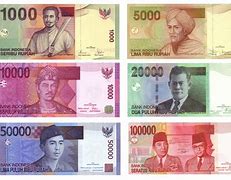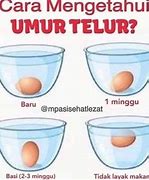
Landlocked populations
Some sockeye salmon populations are completely landlocked. Sockeye that live and reproduce in lakes are commonly called kokanee, which is red-fish name in the Sinixt Interior Salish language and silver trout in the Okanagan language.[7][8] They are much smaller than the anadromous variety and are rarely over 35 cm (14 in) long. In the Okanagan Lake and many others, there are two kinds of kokanee populations – one spawns in streams and the other near lake shores. Landlocked populations occur in the Yukon Territory and British Columbia in Canada, as well as, in Alaska, Washington, Oregon, California, New York, Utah, Idaho, Montana, Nevada, Colorado, New Mexico, and Wyoming in the United States. Nantahala Lake is the only place in North Carolina where kokanee salmon are found.[3] The fish, which is native to western North America, was stocked in Nantahala Lake in the mid-1960s by the NC Wildlife Resources Commission in an attempt to establish the species as a forage fish for other predator fishes in the lake. This stock has remained and become a favorite target for anglers.[9]
In Japan, a landlocked variety termed black kokanee, or "kunimasu" in Japanese, was deemed to be extinct after 1940, when a hydroelectric project made its native lake in northern Akita Prefecture more acidic. The species seems to have been saved by transferring eggs to Saiko Lake, 500 kilometers to the south, however.[10] This fish has been treated as a subspecies of sockeye Oncorhynchus nerka kawamurae, or even an independent species Oncorhynchus kawamurae.[11]
Sockeye salmon use patterns of limnetic feeding behavior, which encompasses vertical movement, schooling, diel feeding chronology, and zooplankton prey selectivity. They can change their position in the water column, timing and length of feeding, school formation, and choice of prey to minimize the likelihood of predation. This also ensures they still get at least the minimum amount of food necessary to survive. All of these behaviors contribute to the survivability, and therefore fitness of the salmon. Depending on location and threat of predation, the levels of aggressive feeding behavior can vary.[12][13]
Sockeye salmon, unlike other species of Pacific salmon, feed extensively on zooplankton during both freshwater and saltwater life stages.[14] They also tend to feed on small aquatic organisms such as shrimp. Insects and occasionally snails are part of their diets at the juvenile stage.[3][15]
Sockeye salmon exhibit many different life histories with the majority being anadromous where the juvenile salmon migrate from freshwater lakes and streams to the ocean before returning as adults to their natal freshwater to spawn.[16] Similar to most Pacific salmon, sockeye salmon are semelparous, meaning they die after spawning once. Some sockeye, called kokanee, do not migrate to the ocean and live their entire lives in freshwater lakes.[17] The majority of sockeye spawn in rivers near lakes and juveniles will spend one to two years in the lake before migrating to the ocean, although some populations will migrate to saltwater in their first year.[18] Adult sockeye will spend two to three years in the ocean before returning to freshwater. Females will spawn in 3–5 redds over a period of several days. The eggs usually hatch within six to nine weeks and the fry typically rear in lakes before migrating to the ocean.[19]
Males partake in competitive and sneaking tactics, formation of hierarchies, and non-hierarchical groupings around females who are ready to mate.[20] Reproductive success varies more in males than females. The greater variability in male reproduction is associated with the greater average size and exaggerated shape of males. Reproductive success in females is determined by the number of eggs she lays, her body size, and the survival of the eggs, which is due in part to the quality of the nest environment.[21] Male spatial distribution depends on shifts in reproductive opportunities, physical traits of breeding sites, as well as the operational sex ratio (OSR) of the environment.[20]
Non-dominant males adopt a subordinate behavior, acting as a satellite to mated pairs. During spawning, a subordinate male will move quickly into the redd and release their sperm. Nearby dominant males from other redds will also do this.[22] Male social status is positively correlated to length and dorsal hump size. Larger females tend to spawn in shallower water, which is preferred over deeper water.[21]
There is a dramatic sexual dimorphism at maturity.[21] Males go through numerous morphological changes at maturation including, an increase in body depth, hump height, and snout length. Snout size also increases in females, but hump height and adipose fin length do not increase. This could mean that longer snout sizes are sexually selected, but hump height and adipose fin length are not. Females develop large gonads that are about 25% of the body mass.[23]
Females are responsible for parental care. They select, prepare, and defend a nest site until they die or are displaced. Males do not participate in parental care at all, and they move between females after egg deposition.[24]
Fun Facts About Sockeye Salmon
1. Sockeye salmon are born in lakes, rivers, or streams, but spend most of their adult life in the Pacific Ocean.1
2. Sockeye salmon can be found between northern Alaska and northern California.1
3. Sockeye salmon change color as they grow older.1
4. Sockeye salmon can sometimes have fine black speckles that differentiate them from other salmon species.3
5. A baby sockeye salmon is called a fry.1
Environmental Impact of Atlantic Salmon vs. Sockeye Salmon
Atlantic salmon farms are not self-contained. Rather than taking pressure off wild salmon, they actually put stress on wild fish populations.
Conventional salmon farms introduce pollution, pathogens, and toxic waste into their surrounding environments. Regarding the chemicals used in pens to control disease outbreaks, those inputs leak out into the ocean and seriously impact fish and other species in surrounding areas. The use of antibiotics in these pens to fight off diseases has also created antibiotic-resistant diseases and parasites in the wild.
When the omega-3 supplementation used in salmon feed is derived from wild forage fish, this pits farmed Atlantic salmon against wild species in a competition for resources. In addition, the engineered feed for farmed salmon is made from corn and soy, which may be sourced from industrial farms that pollute and dilute vital resources for other ecosystems.
Sockeye salmon thrive in the wild and don’t need antibiotics or artificial feed to stay healthy. As a keystone species, they’re integral to the health of their ecosystems, playing a key part in an intricate food web designed by nature.
In terms of sustainability, when sockeye salmon are harvested from well-managed wild fisheries like those in Alaska, wild fish populations remain healthy and abundant from season to season, and help to protect critical marine habitats. Well-managed wild fisheries can even help overfished populations recover and sustain themselves in the future.
Is sockeye salmon dyed?
There’s no reason for wild-caught sockeye salmon to be dyed because they naturally develop the vibrant red hues that we associate with salmon.
Sockeye get this color from a carotenoid called astaxanthin, an antioxidant found in abundance in their wild diet of shrimp, krill, and zooplankton. Of all the wild Pacific species of salmon, sockeye salmon is the variety with the boldest color in their flesh, as their diet is primarily zooplankton. Other species of Pacific salmon consume less of these food and more small fish, so they are subtler shades of pink, orange, and red.
What does sockeye salmon taste like?
Between its texture and flavor, sockeye is one of the boldest species of wild salmon. If you’ve never tasted sockeye salmon before, the first bite of this species might be a pleasant surprise. Its robust flavor and texture are a reflection of its habitat and life cycle, giving you a true taste of nature.
Sockeye has a “salmon-forward” flavor that is bold enough to enjoy on its own or to be paired with intense flavor profiles. This species also has a meaty, dense quality as it is quite lean — but it’s a good source of omega-3 fatty acids.
What is Atlantic salmon?
When you’re at the store, any fish that’s being marketed as Atlantic salmon is farmed Atlantic salmon. That’s because Atlantic salmon are an endangered species in the wild, with limited habitats in Maine as well as Canadian tributaries in the North Atlantic. Wild Atlantic salmon cannot be harvested by fishermen or sold in markets as scientists attempt to restore historical runs and rehabilitate wild Atlantic salmon populations.
Farmed Atlantic salmon are produced in aquaculture farms around the world, accounting for nearly 70 percent of the salmon market. While salmon aquaculture is a massive industry, it comes at the price of conservation issues that impact wild salmon populations and the fragile ecosystems that surround open-net salmon pens.
For example, the implosion of a net pen in Puget Sound in 2017 finally prompted the state government to ban Atlantic salmon farming in state-owned waters. Whether we’re considering Atlantic salmon vs Pacific salmon species, finfish farming in the open seas is so problematic that it’s also currently banned in Alaska, Oregon, and California.
In terms of taste and appearance, farmed Atlantic salmon have a less robust flavor profile than sockeye and are paler in color, owing to farmed salmon’s engineered diet. The feed is often made up of fish oil and other supplements like corn or soy. This diet lacks the krill and zooplankton that are part of salmon’s dietary needs, affecting both the color and nutritional profile of farmed Atlantic salmon.
What is sockeye salmon?
Sockeye salmon refers to a particular species of salmon, Oncorhynchus nerka, also commonly known as red salmon. It is a wild-caught species of Pacific salmon with habitats in and around Alaska, and as far south as the Pacific Northwest. Notably, Bristol Bay, located in Southwest Alaska, is home to the largest sockeye spawning ground in the world. Many know sockeye salmon as the crown jewel of the Alaskan fishing industry, because it’s the most economically important species of salmon in Alaska.
Sockeye salmon has been a critical source of food for communities on the Pacific coast for tens of thousands of years. Today, a majority of the sockeye that goes to market is from stocks in Alaska where fisheries are healthy and abundant. Populations in the Pacific Northwest are significantly smaller, due to habitat loss from hydroelectric dams and urban development, which poses a unique threat to the Native American tribes for whom salmon is both a cornerstone of their ancestral diet and culture.
Where to Buy Wild Sockeye Salmon Online
Listed as a Bristol Bay-certified sockeye salmon supplier, Wild Alaskan Company is a trusted source for wild-caught salmon, offering fillets of wild sockeye and coho salmon that are flash-frozen shortly after harvest, processed while frozen, and shipped frozen to your doorstep. Choose your salmon subscription box today to get high-quality, sustainably-caught seafood. Consider sharing the gift of wild salmon to friends and family. Sending the gift of Alaskan seafood to your loved ones is a thoughtful way to show you care.
Classification and name origin
The sockeye salmon is the third-most common Pacific salmon species, after pink and chum salmon.[2] Oncorhynchus comes from the Greek ὄγκος (onkos) meaning "barb", and ῥύγχος (rhynchos) meaning "snout". Nerka is the Russian name for the anadromous form.[3] The name "sockeye" is an anglicization of suk-kegh (sθə́qəy̓), its name in Halkomelem, the language of the indigenous people along the lower reaches of the Fraser River (one of British Columbia's many native Coast Salish languages). Suk-kegh means "red fish".[4][5]
The sockeye salmon is sometimes called red or blueback salmon, due to its color.[5] Sockeye are blue tinged with silver in color while living in the ocean.[3] When they return to spawning grounds, their bodies become red and their heads turn green. Sockeye can be anywhere from 60 to 84 cm (2 ft 0 in – 2 ft 9 in) in length and weigh from 2.3 to 7 kg (5–15 lb).[5] Two distinguishing features are their long, serrated gill rakers that range from 30 to 40 in number, and their lack of a spot on their tail or back.[3]
Sockeye salmon range as far south as the Columbia River in the eastern Pacific (although individuals have been spotted as far south as the 10 Mile River on the Mendocino Coast of California) and in northern Hokkaidō Island in Japan in the western Pacific. They range as far north as the Bathurst Inlet in the Canadian Arctic in the east and the Anadyr River in Siberia in the west. The farthest inland sockeye salmon travel is to Redfish Lake, Idaho, over 1,400 km (900 mi) by river from the ocean and 2,000 m (6,500 ft) in elevation.[6] In the United States, populations of sockeye salmon have been extirpated from Idaho and Oregon.
Is sockeye salmon dyed?
There’s no reason for wild-caught sockeye salmon to be dyed because they naturally develop the vibrant red hues that we associate with salmon.
Sockeye get this color from a carotenoid called astaxanthin, an antioxidant found in abundance in their wild diet of shrimp, krill, and zooplankton. Of all the wild Pacific species of salmon, sockeye salmon is the variety with the boldest color in their flesh, as their diet is primarily zooplankton. Other species of Pacific salmon consume less of these food and more small fish, so they are subtler shades of pink, orange, and red.























